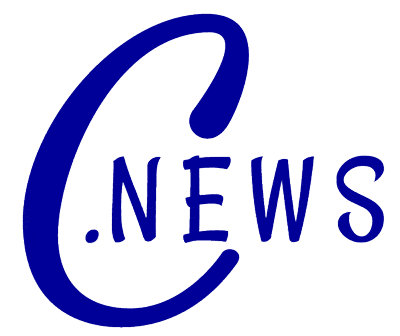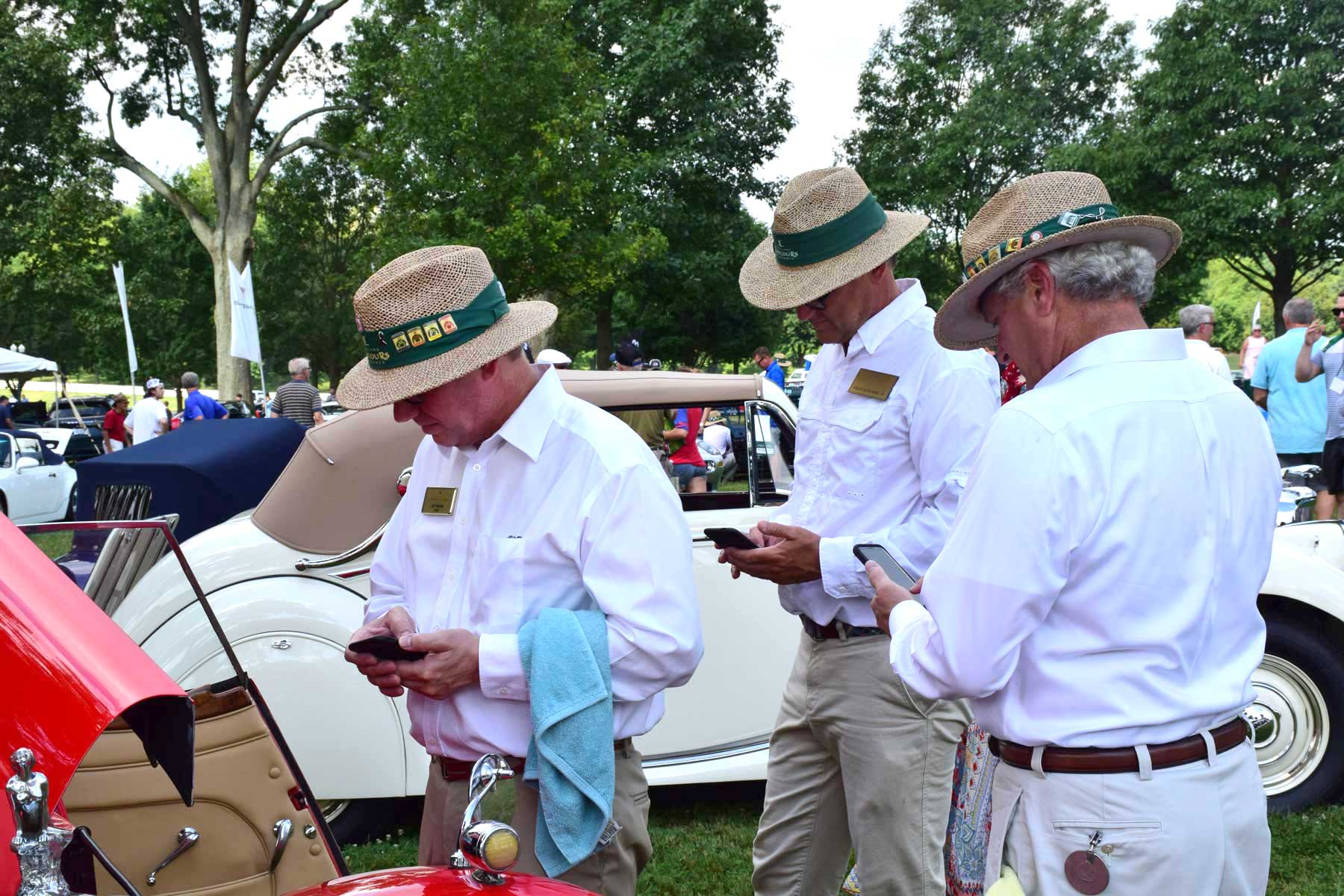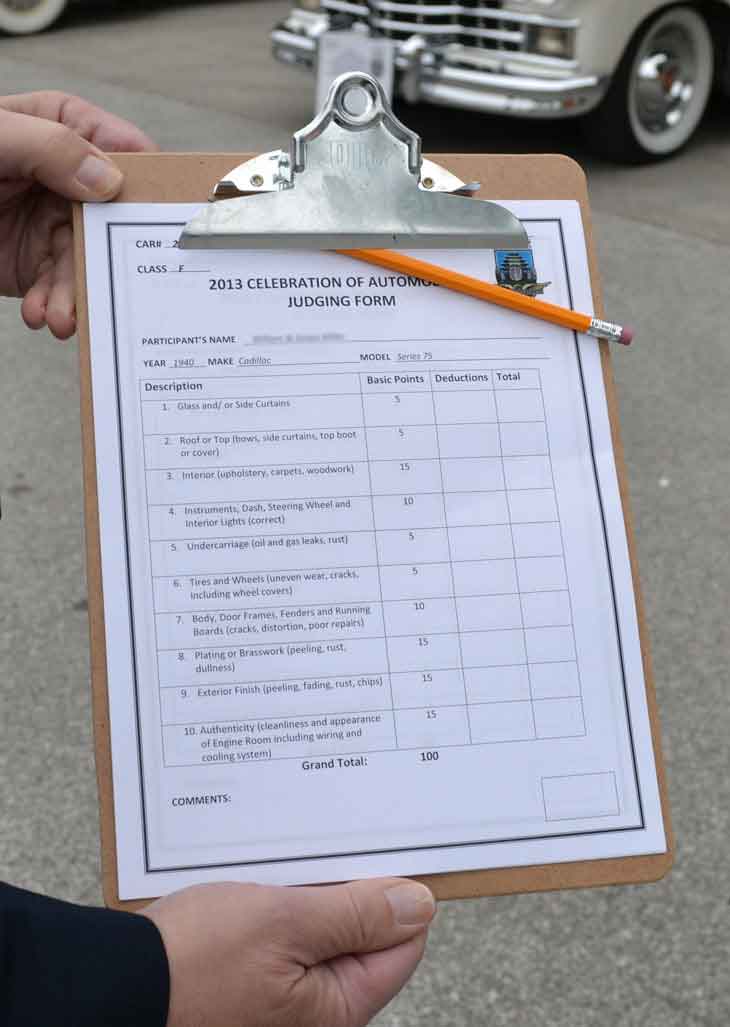For a period of several hours last Saturday morning, trios of uniformly attired, straw-hatted men and women intently tapped their smartphone screens while scrutinizing more than 130 cars, motorcycles, bicycles and carriages. The occasion was the 16th annual Keeneland Concours d’Elegance car show in Lexington, KY, and the class judges pictured above recorded scores electronically rather than by pencil on paper for the first time.
Each trio was assigned to evaluate one of 19 classes of vehicles separated by make, style or function and arranged in a circle of six to eight cars. Each circle had a designation such as: Coach Built Classics, Foreign Collector, Classic Ford Thunderbirds, etc.
Judges use a points system to meticulously analyze each vehicle in terms of appearance, quality and originality of the exterior, interior, engine compartment, instruments, metal plating, tires and other aspects. The most common practice is for each vehicle to be assigned a 100 point score, then have each judge individually make deductions on his or her scoresheet for any faults discovered. The Keeneland Concours system of scoring ranks the entries in each class by point value, with awards going to Best in Class and Runner-up. (In addition to the class awards, there are special awards such as People’s Choice, Best British Car, etc)
Crunching Numbers
In past years at Keeneland, scores on the 400-some-odd judge’s sheets were crunched in a remote room, free of distractions. This time, presumably, numbers were crunched in “the cloud” and results were made available to the committee in real time. (see note below) Remember that the awards program takes place mid-afternoon, so volunteers need plenty of time to line winners up for the podium presentation.
Digital scoring input is not new on the car show circuit. Over the last few years, judges have utilized tablet devices at several major events, but mostly as an adjunct to paper and pencil. Sometimes a local student would be assigned to a judging team to assist with use of the devices. But going entirely paperless with a smartphone app is a technological milestone for a nationally recognized concours d’elegance.
In past years, scores on the 400-some-odd judge’s sheets were crunched in a secluded room. This time, presumably, numbers were crunched in “the cloud” and results were made available to the committee in real time. (see note below) Remember that the awards program takes place mid-afternoon, so volunteers need plenty of time to line winners up for the podium presentation.
Digital scoring input is not new on the car show circuit. Over the last few years, judges have utilized tablet devices at several major events, but mostly as an adjunct to paper and pencil. Sometimes a local student would be assigned to a judging team to assist with use of the devices. But going entirely paperless with a smartphone app is a technological milestone for a nationally recognized concours d’elegance.
Many Kentucky visitors and residents would agree that understated elegance is the norm throughout the idyllic Lexington countryside, which includes the concours venue, located on the well-landscaped grounds of the venerable Keeneland Race Course. (That’s where much of the movie Seabiscuit was filmed.) Perhaps it’s the relaxed atmosphere that explains why the significant decision to use smartphones came without fanfare.
In fact, the only explanation of this novel approach appears in the last paragraph of the last section of the 140-page hardbound Keeneland Concours program.
FROM. . . Clipboard / Paper / Pencil / Notebook
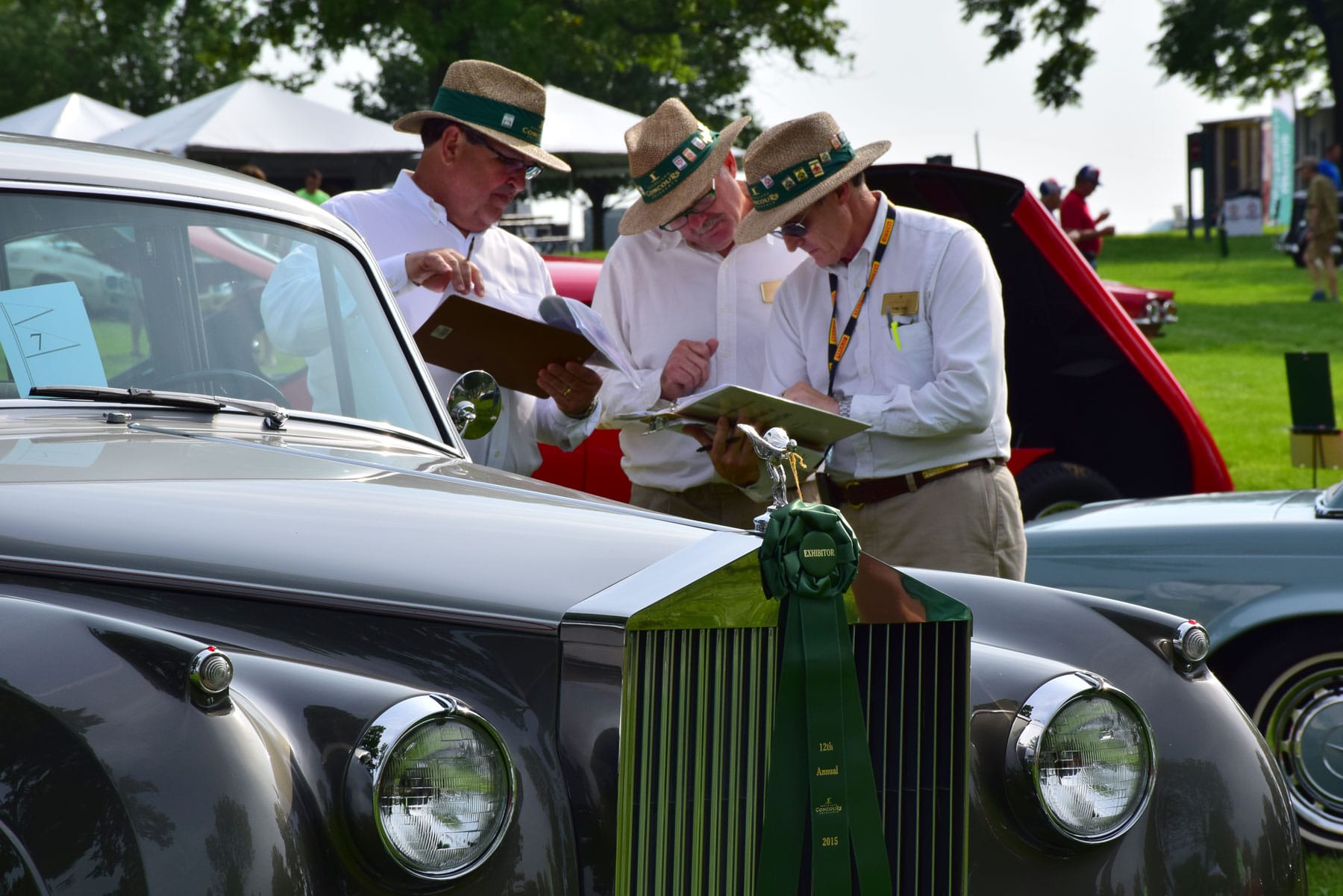
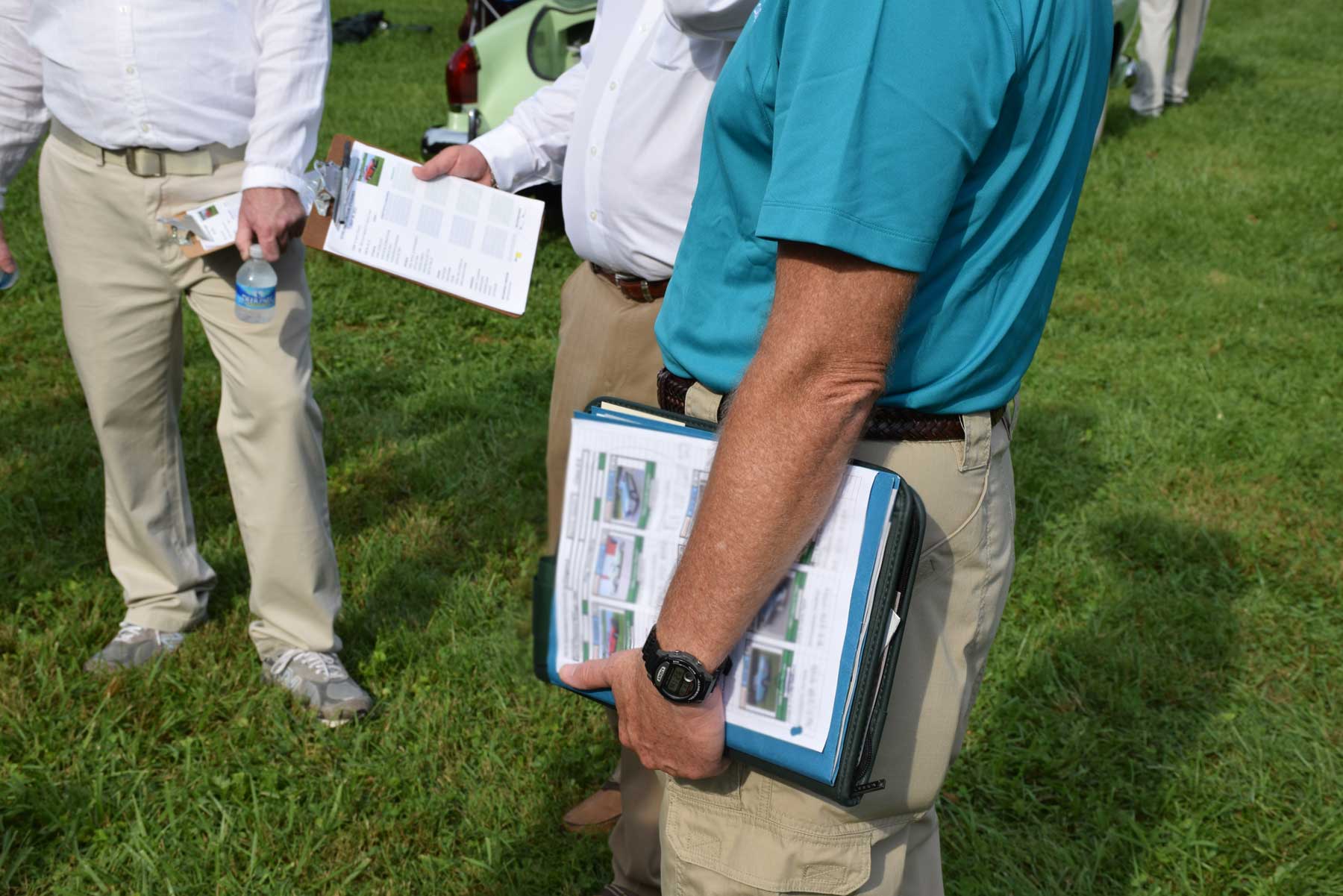
TO. . . Smartphone / Reading Glasses / Charger
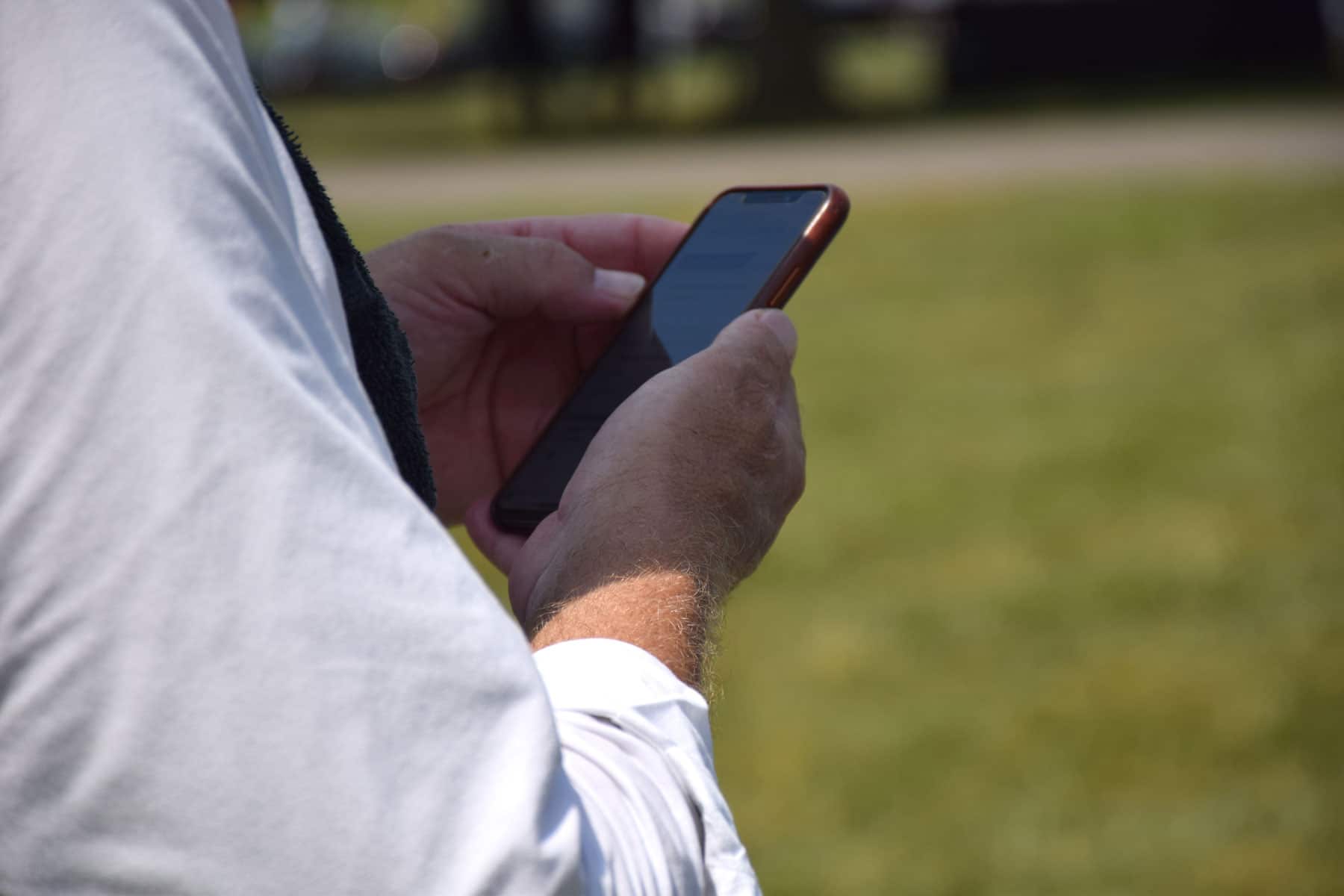
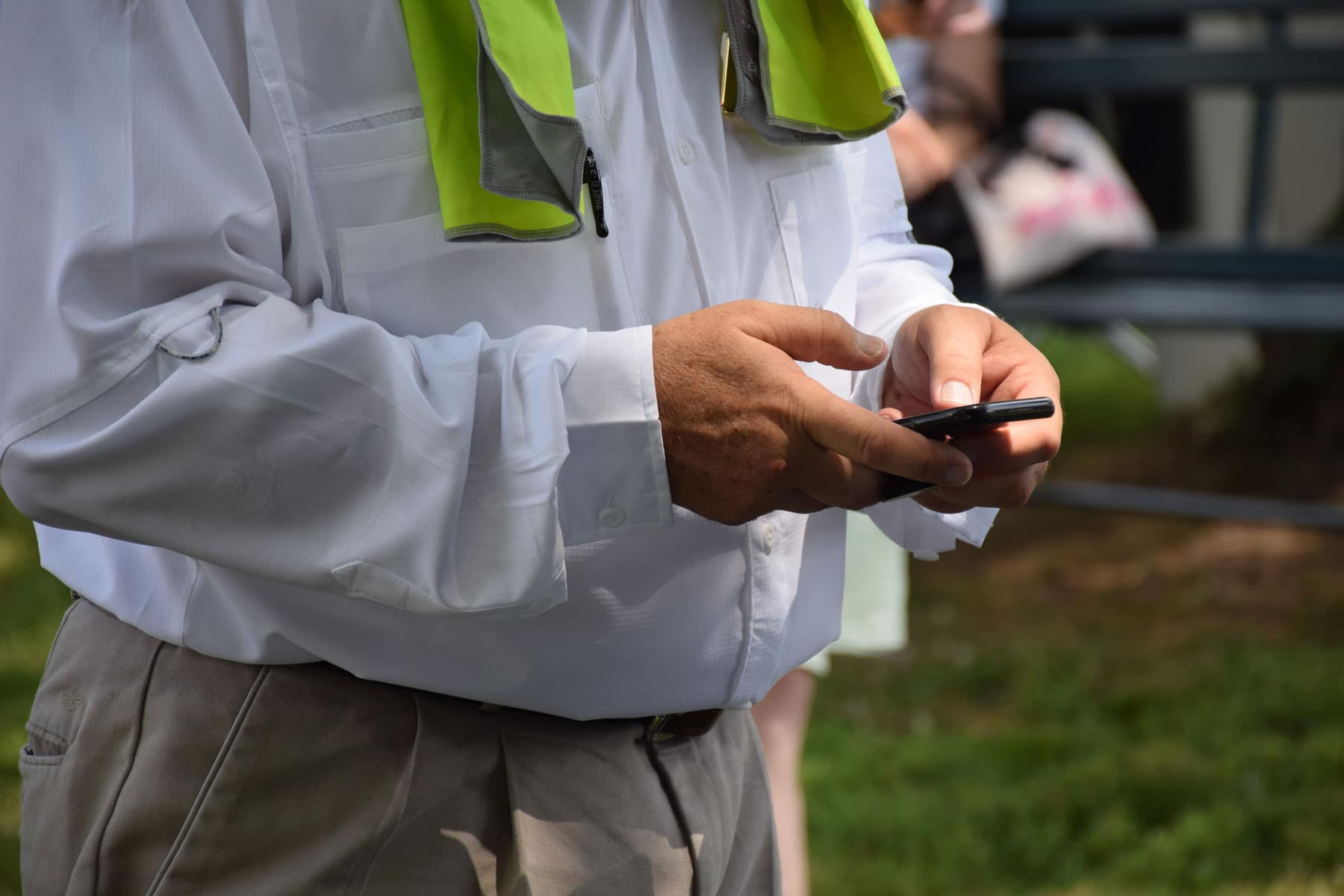
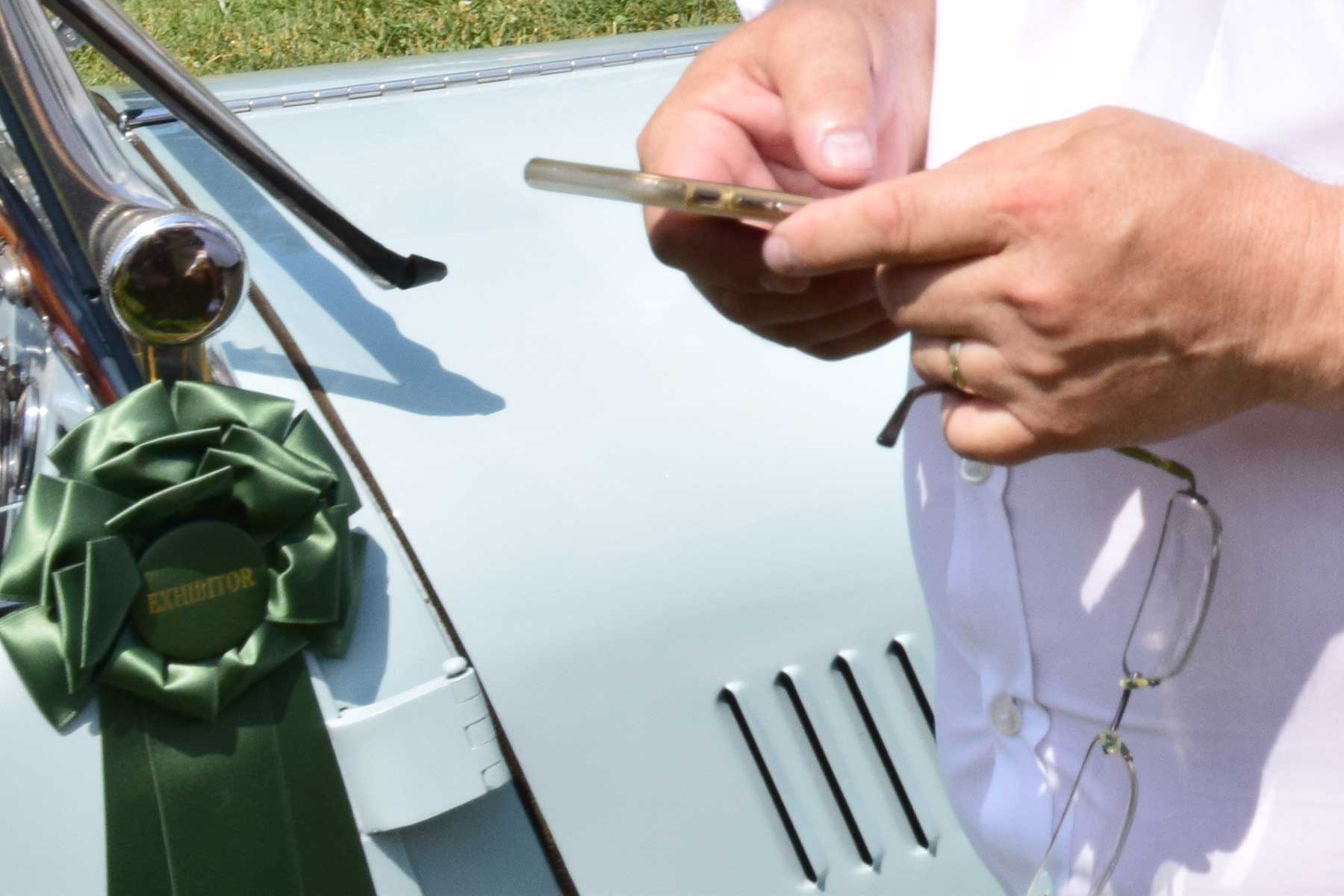
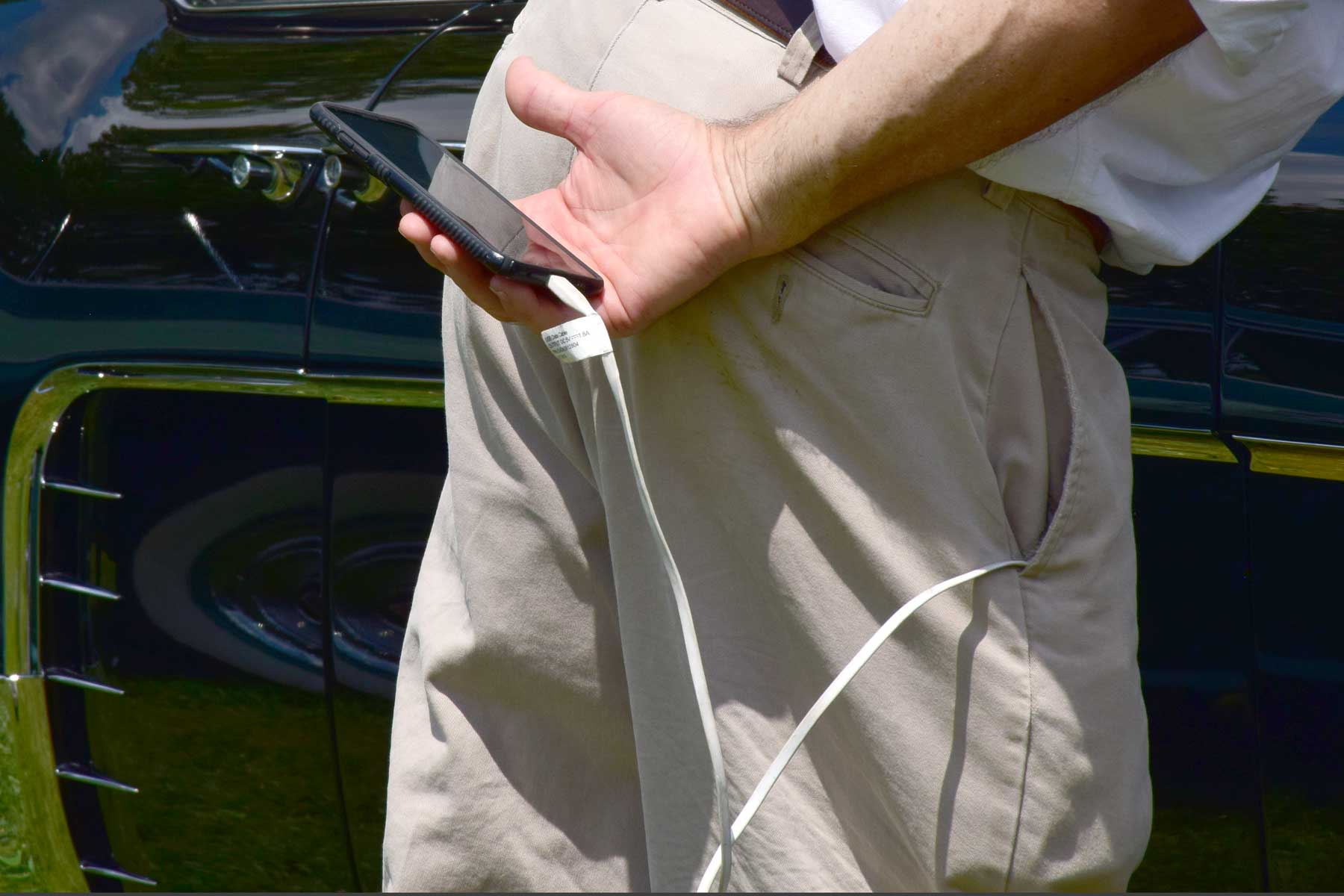
Similar Outcome. . . Trophies and Ribbons
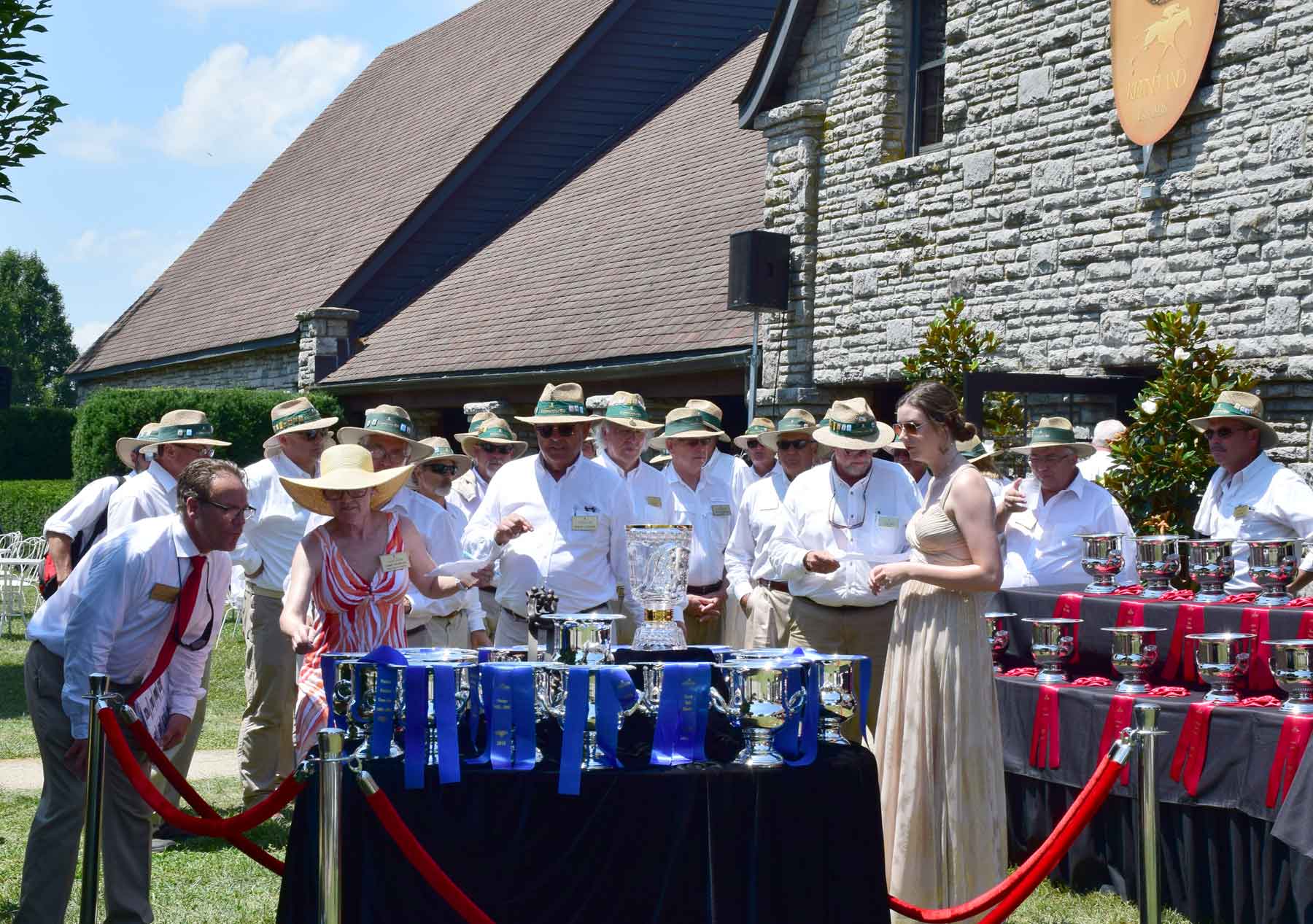

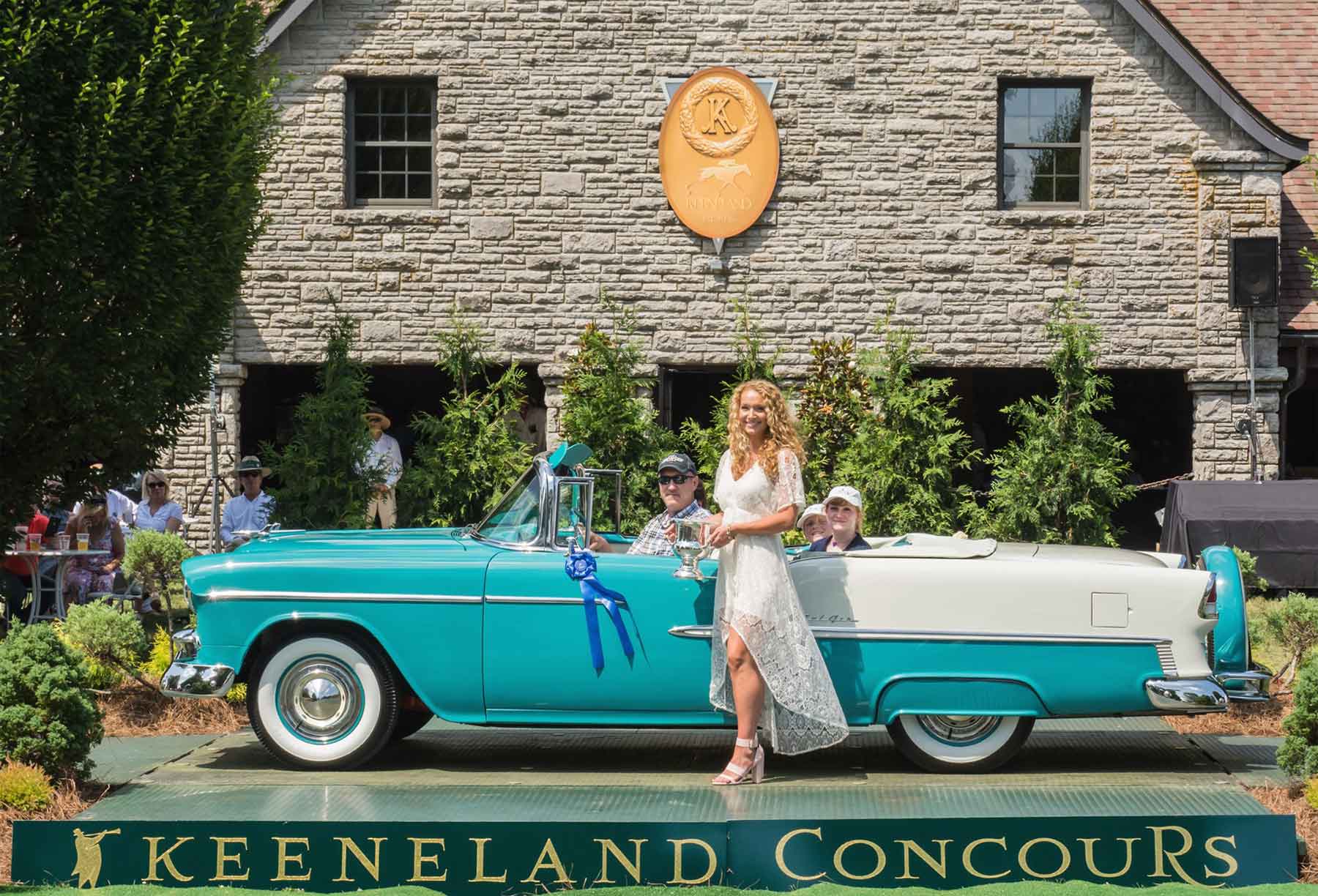

Podium photos: Blue car: 1955 Chevrolet Bel Air, winner of Best in Class – Collector American (Open). Tan car above: 1933 Isotta Fraschini Tipo 8A, winner of Best in Class – Coach Built Classics and Best in Show.
Notes:
Officials chose not to comment for this article until the judging committee completes its review of the scoring system. Stay tuned for a follow-up report.
There do exist a few proprietary digital scoring systems, which can be found online. However, to the best of our knowledge, this is the first time a major concours has gone paperless.
Photos: all images by John Olman, except the two podium views by Keeneland Concours.
LINKS: Keeneland Concours info — Award winners
